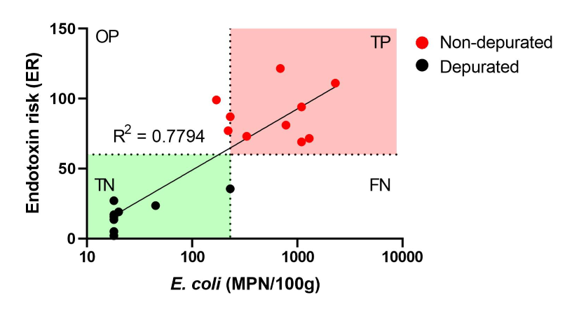BACTERIAL CONTAMINATION IN SHELLFISH – ENDOTOXIN PROVIDES A RAPID TESTING SOLUTION
Background
Shellfish are filter feeders that can accumulate harmful pathogens, including bacteria (e.g., Vibrio spp , Salmonella spp , Shigella spp , Campylobacter spp and pathogenic Escherichia coli) . Culture of E. coli in shellfish still represents the primary way of assessing the microbiological quality of shellfish . The reference methods (EN/ISO 6888-1 and 2 of 1999) require incubation periods ranging from 24 to 48 hours (or longer), to allow bacterial colonies to grow, which delay results and potential public health protection actions. This presents several problems including the long time to results and focus on E. coli . Moreover, culturing bacteria requires trained personnel, specialized lab facilities, and expensive reagents. These factors make it less practical for high-throughput or field-based testing, especially in resource-limited settings.
Shellfish classification categories are based on permitted levels of E. coli/100g flesh and intravalvular liquid. The disadvantages of culture-based testing for bacterial contamination highlights the need for new rapid, sensitive, field-based tests to detect bacterial contamination of shellfish to allow proactive measures to protect public health.We have previously described a validated method to rapidly assess bacterial contamination in recreational water (Good et al., 2024; Sattar et al., 2022). This is based on the detection of a bacterial molecule (endotoxin). In this study , we describe an adaptation of this method to rapidly detect Gram-negative bacterial contamination of shellfish that can be used in the field by non-technical staff. This study has established the feasibility of a novel method to rapidly detect bacterial contamination in oyster flesh and has shown that the Endotoxin Risk (ER) value significantly correlates with E. coli content in oysters.
Methods
Two hundred pacific oysters (Crassostrea Gigas) were sourced locally in Devon; 100 of the oysters had been depurated and 100 had not been depurated. The oysters were stored at 4°C ± 2°C and were examined within 48 hours . The amount of Escherichia coli in the oysters was enumerated by the Most Probable Number (MPN) method, following the ISO 16649-1 . Endotoxin was measured using t he Bacterisk assay (Molendotech Ltd., Brixham , UK; www.molendotech.com) and was performed following the manufacturer’s instructions. The Bacterisk device was pre-calibrated using known endotoxin standards (0.1- 10 EU/mL) and against known reference concentrations of E. coli (10-5000CFU/100mL) Output from the Bacterisk device is given in Endotoxin Risk units (ERU) which are calibrated from known endotoxin standards. The ERU values can be equated with known concentrations of E. coli (CFU/100mL) to give threshold and cut-off values (Good et al., 2024)
Results
By using the threshold for class A shellfish of 230 E. coli/100g and setting a proposed equivalent threshold of 60 ERU it was possible to split the data into quadrants (see Figure 1) to show off-target positives (i.e. detection of other Gram-negative bacteria) (n=3), true positives (n=7), true negatives (n=10) and false negatives (n=0). From this the following was calculated: Sensitivity: 100%, Specificity: 77%, False negative rate: 0% and Off-target positive rate: 30% The specificity and off-target rate reflect that this test will also respond to bacteria other than E. coli including pathogens such as Salmonella spp and Vibrio spp and can thus alert to the contamination of shellfish with pathogens not detected by current methods.
Conclusion
This study has established the feasibility of a novel method to rapidly detect bacterial contamination in oyster flesh and has shown that the Endotoxin Risk (ERU) value significantly correlates with E. coli content in oysters . As microbial threats evolve, continued investment in rapid detection technologies and regulatory oversight will be essential for maintaining public health standards.
